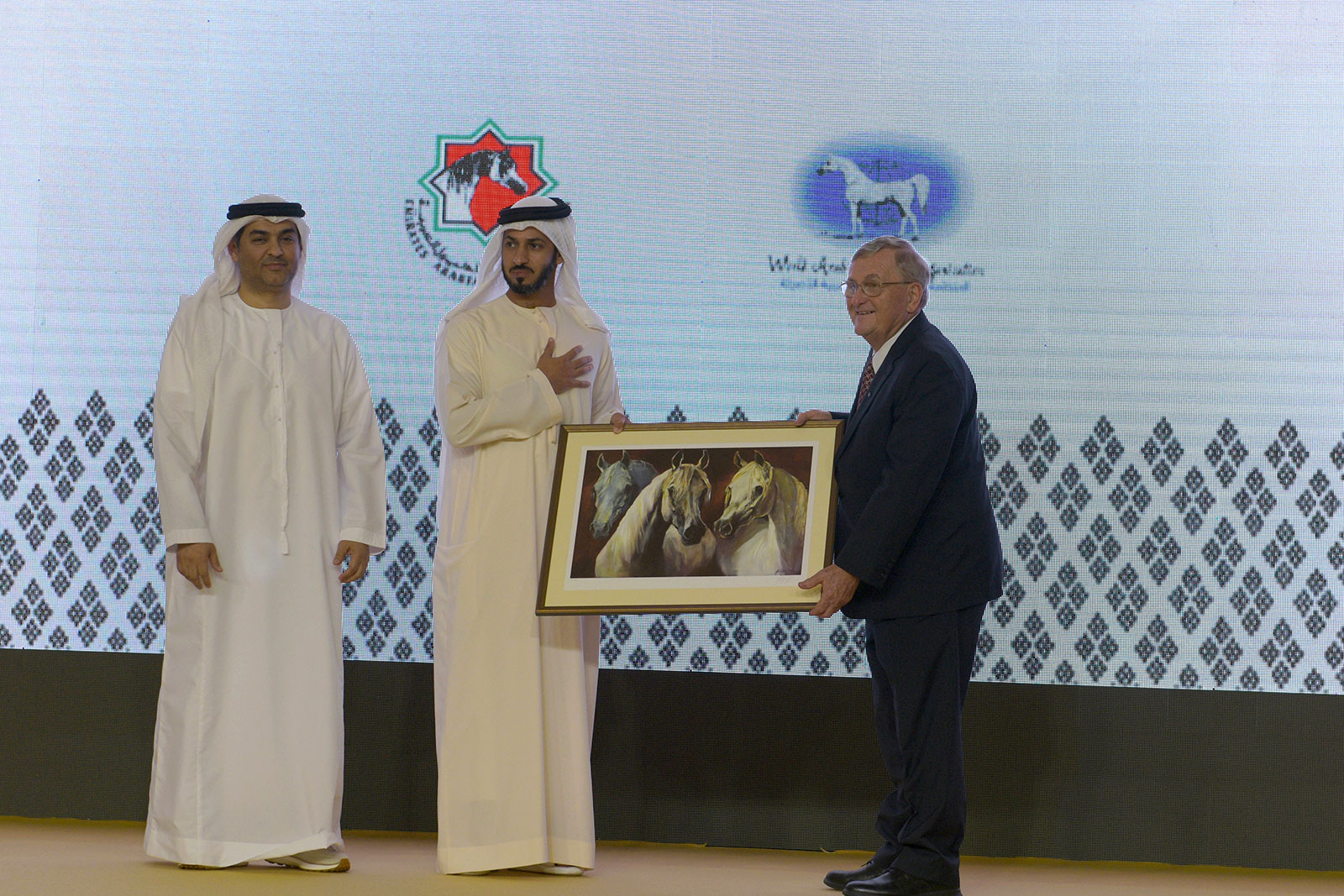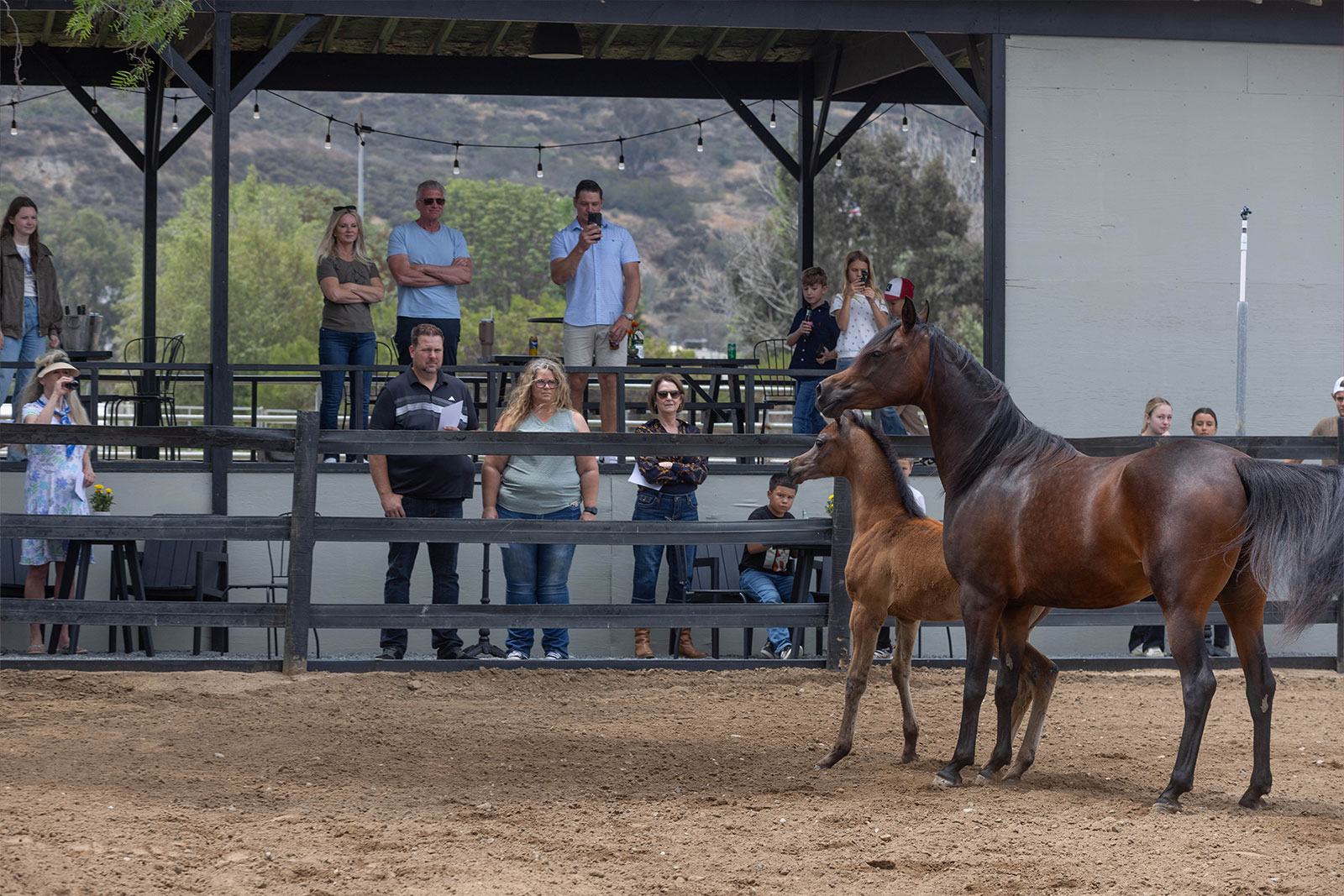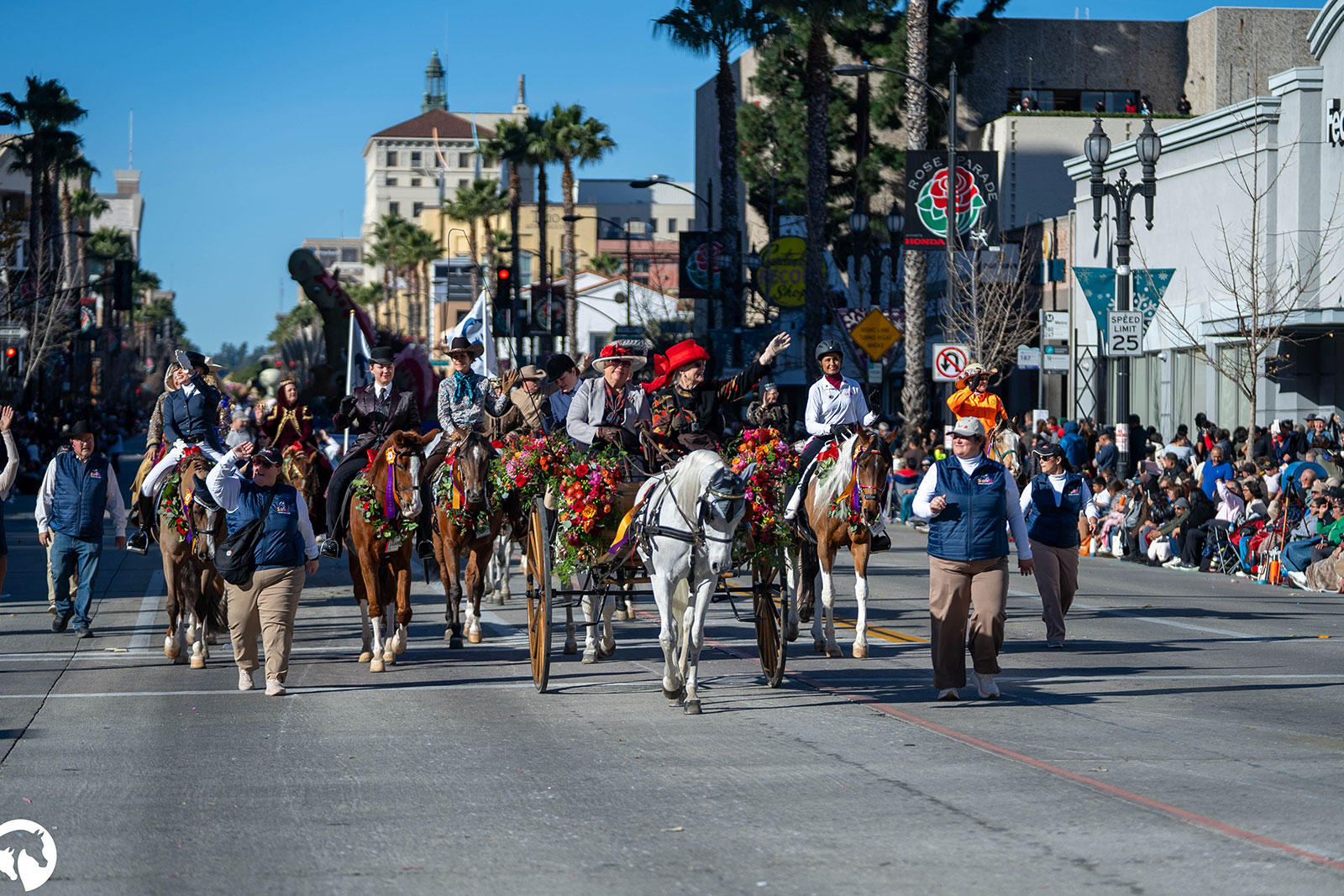Above: Peter Pond presenting HE Sheikh Zayed bin Hamad Al Nahyan with artwork by Jacquie Jones, on the left is Mohamed Alharbi.
Photos and Story by Sharon Meyers
As featured in the Summer 2025 issue of Arabian Horse World
The 2025 World Arabian Horse Organization (WAHO) Conference was held in Abu Dhabi, United Arab Emirates (UAE) from April 5 to April 12 at the luxurious St. Regis Saadiyat Island Resort.
Due to the extraordinary generosity of the Emirates Arabian Horse Society, their Chairman HH Sheikh Mansour bin Zayed Al Nayan, Deputy Chairman HE Sheikh Zayed bin Hamad Al Nahyan and Director General Mohamed Alharbi covering the costs of the WAHO registration fee, pre-conference tours and the Heritage of Emirates Days for attendees, a record breaking 56 countries attended the conference.
This is the second time Abu Dhabi has hosted the WAHO Conference; the first was nearly 30 years ago in 1996. Between these two conferences, there has been a remarkable growth in the number of Arabian horses in the UAE. Today, the UAE is a country of great consequence for the Arabian horse. Racing, endurance riding, and showing all play a vital part in breeding programs across the seven Emirates. Their Arabian horses have garnered colossal international success.
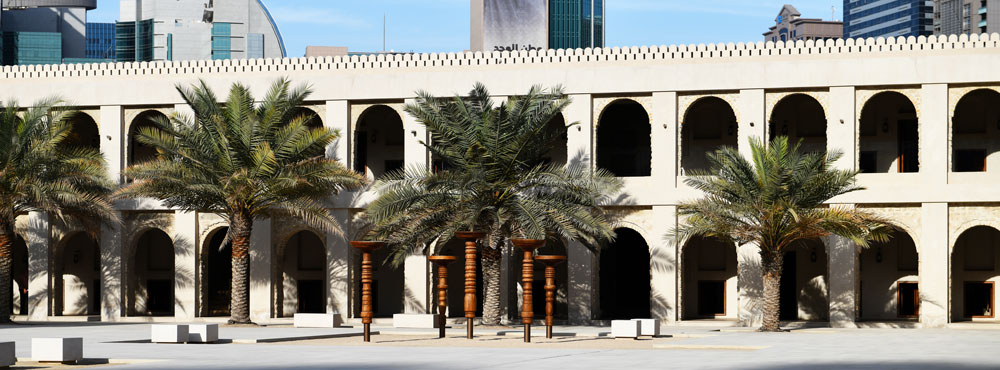
Qasr Al Hosn Fort.
REMARKABLE VISIT
I was fascinated by Abu Dhabi’s architectural ingenuity, attention to detail and their passion for perfection which shone through as we explored the city. We were fortunate to take pre-conference tours to several magnificent and iconic venues, including the Louvre Abu Dhabi, Qasr Al Watan, and the Sheikh Zayed Grand Mosque. We also happily meandered around souks and cultural sites. Social events, such as lunches and dinners, were held at outstanding venues, with many meals featuring delicious and vibrant blends of traditional Emirati dishes. The hospitality extended to WAHO members during our visit was exceptional.
Many of us spent a whole day in Sharjah, ‘The Pearl of the Gulf’, visiting the fabulous Sharjah Museum of Islamic Civilization and other fascinating places. Late afternoon, our group dropped into their vast and well-appointed equestrian centre to see Arabian horses competing at the 26th Sharjah International Arabian Horse Festival. It was a memorable and thrilling evening watching impressive Arabian horses vie for the championship awards. On other days, we attended exciting Arabian horse racing at the Al Ain and Abu Dhabi racecourses. At Abu Dhabi, we had the perfect opportunity to view some of the athletic and successful racehorses owned by HH Sheikh Tahnoon bin Zayed Al Nahyan’s Al Reef Stables.
A highlight for the WAHO group was when we were honored with a visit to Dubai Arabian Horse Stud, where we viewed 61 of their glorious Arabian mares, some with foals at their side. The mares were sympathetically and professionally exhibited in family groups, which was very educational. It was a joy to see these splendid mares, many of which were world champions, as well as being dams and grand dams of world champions. At the conclusion of the parade, FA El Rasheem (FA El Shawan x Virtuosa MLR) and his handsome son D Seraj (dam Ladi Veronika) stormed into the arena, putting on a brilliant show for us. What an unexpected finale to an unforgettable day.
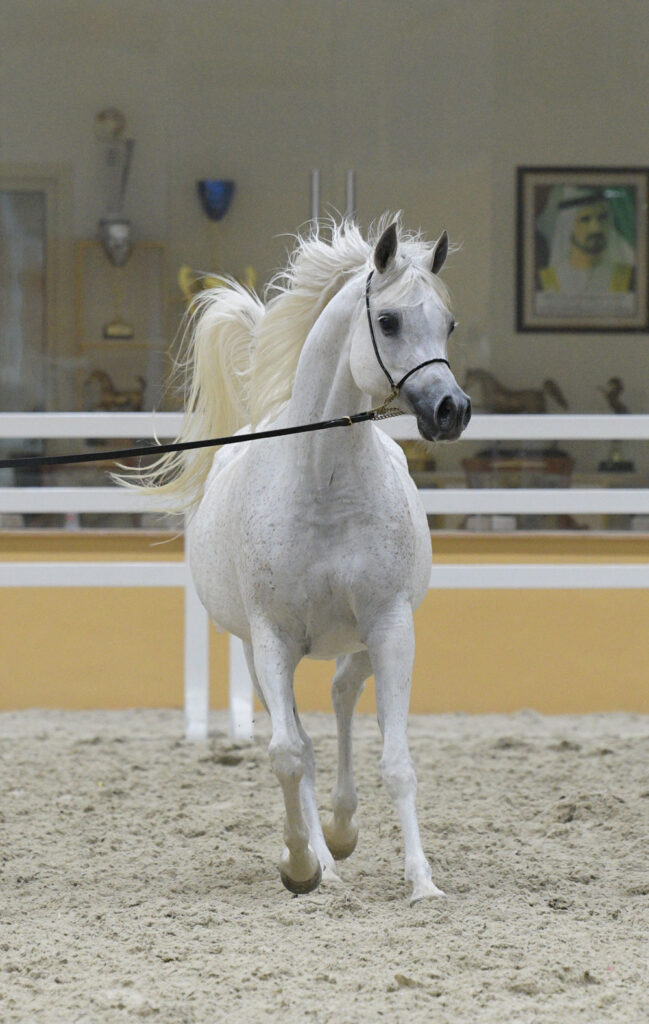
Dubai Arabian Horse Stud’s 2015 World Champion Junior Female D Shahla (Marajj x FT Shaella).
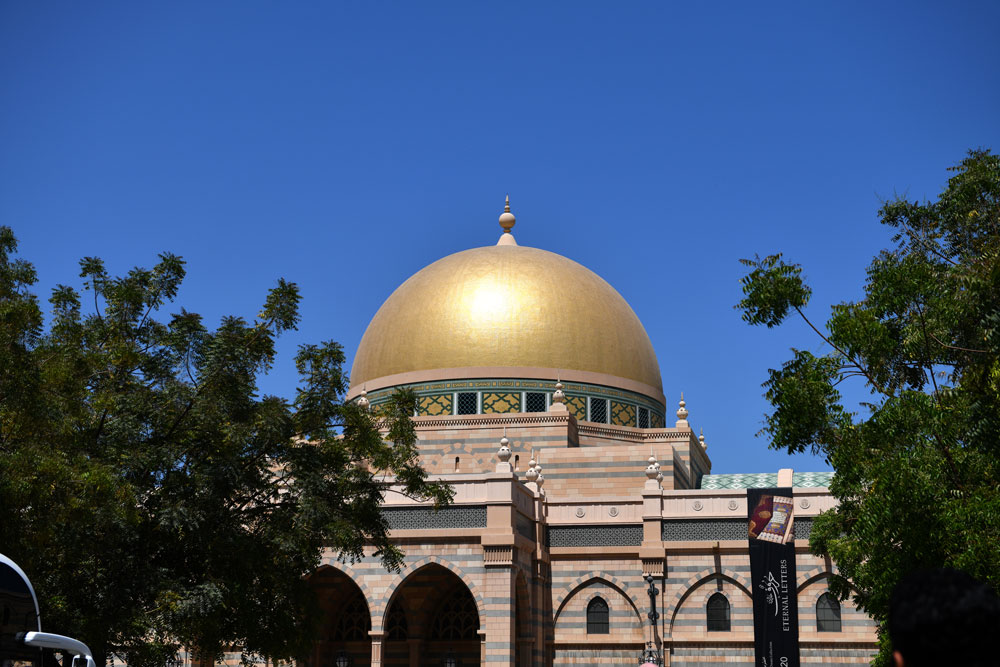
Sharjah Museum of Islamic Civilization.
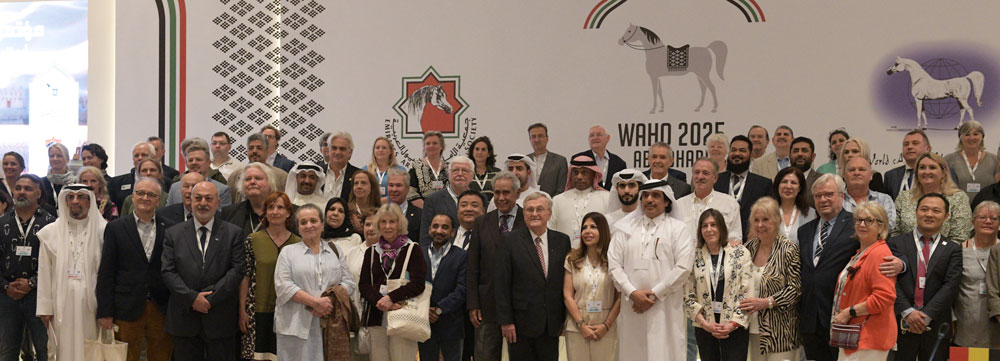
WAHO Executive Committee with a few Delegates and Observers.
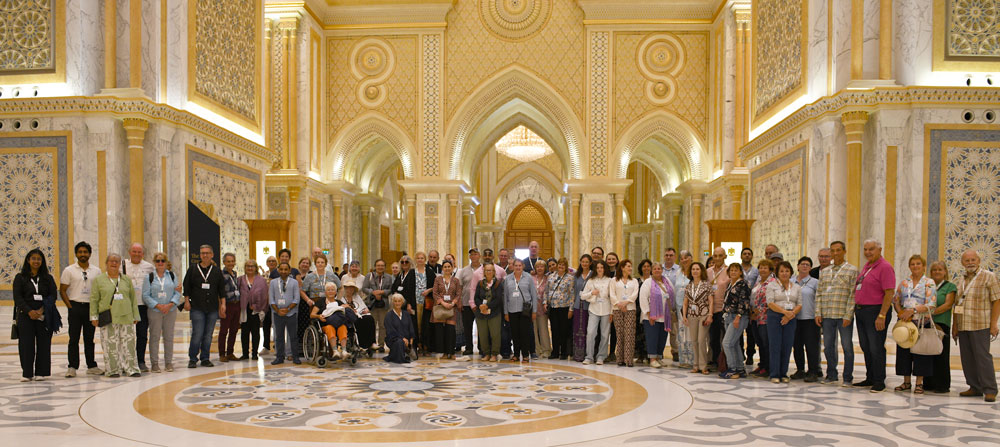
WAHO visitors at the magnificent Qasr Al Watan.
WAHO CONFERENCE
It was an illuminating two-day conference, and at the Official Opening, we were warmly welcomed by representatives of the ruling family. An informative video was shown emphasising the vision of HH Sheikh Zayed bin Sultan Al Nahyan, the Father of the Nation, and the admirable achievements of the Emirates Arabian Horse Society and their Arabian horse breeders. Then, HE Sheikh Zayed bin Hamad Al Nahyan graciously opened the conference and spoke on behalf of HH Sheikh Mansour bin Zayed Al Nayan, saying it was an honour to welcome everyone to the UAE.
WAHO President Peter Pond has been a Life Member of WAHO since 1971 and joined the Executive Committee in 1996. Since 2014, Peter has presided over five conferences as President. He said, ‘I always remind the meeting in this opening speech that WAHO is a non-political organization. WAHO was founded on our members’ respect for one another, on mutual cooperation and friendship among individuals, between countries, and across cultures, histories, and languages. We often call ourselves the unique Family of WAHO.’
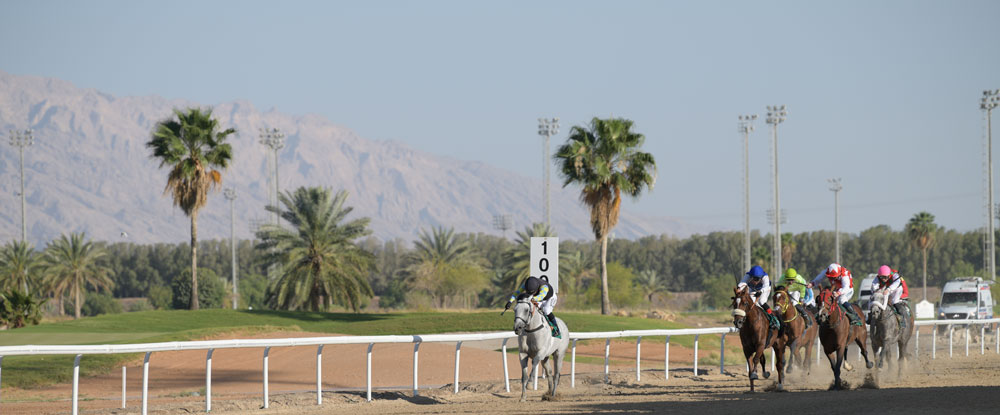
Arabian racing at the picturesque Al Ain Racecourse.
WAHO BUSINESS
The two days of the WAHO General Assembly were taken up with various reports and Delegate votes. Two minor changes were made to the WAHO Constitution, and the Treasurer’s Report included a notice of an increase in several categories of WAHO membership fees, effective from 2026. However, there will be no changes to the fees for Individual Associate Members. The People’s Republic of China was welcomed as a full Registering Authority Member. Ukraine has submitted the final draft of their first stud book for approval, and once approved, they will also become a full Registering Authority Member. It’s of great interest that, due to the extraordinary efforts of Ukraine’s Arabian horse owners, no Arabians have been lost in the tragic war that’s taking place there.
The issue of Embryo Transfer (ET) has been discussed many times at past Conferences, in particular to protect the health and welfare of Arabian mares, and it was a hot topic at this meeting. Although a suggested new rule to limit donor mares to one ET foal and one natural foal per year did not pass the vote of the Delegates to the World Registrars Meeting, albeit by a narrow margin, it was agreed to add this recommendation to the WAHO rules: “In order to protect the welfare of Arabian mares, it is a very strong WAHO recommendation that each donor mare is limited to producing one foal per year by Embryo Transfer, that foal to be carried by a recipient mare. That donor mare may also give birth to a naturally carried foal in the same year. In the case of naturally carried twin foals, both will be eligible for registration. For the purpose of this recommendation, a year consists of a period of 12 consecutive months.” WAHO also strongly recommends, again for welfare reasons, that fillies should be over the age of 36 months prior to their first use for breeding, regardless of the method of breeding used.
A true friend of the Arabian horse and a passionate supporter of WAHO, Dr. Marek Trela sadly retired from the Executive Committee, a position he had held since 2004. In 2015, he was appointed WAHO Vice-President. In recognition of his distinguished service, Dr Trela was made an honorary Executive Committee Member and a WAHO Honorary Life Member. Her Royal Highness Princess Alia Al Hussein has assumed the position of Vice President. Dr Mohamed Machmoum was appointed by vote of the Delegates as a consultant to the WAHO Executive Committee.
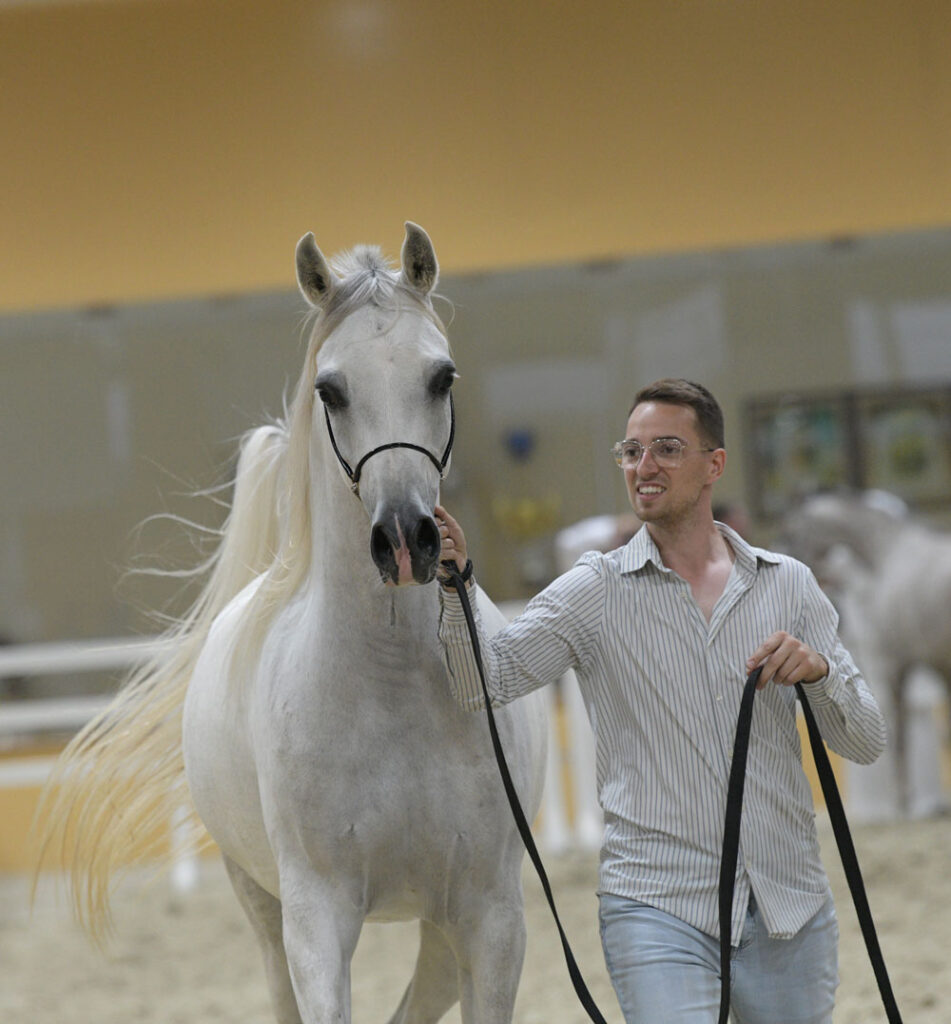
Dubai Arabian Horse Stud’s mare D Raseel (D Seraj x Elle Flamenca).
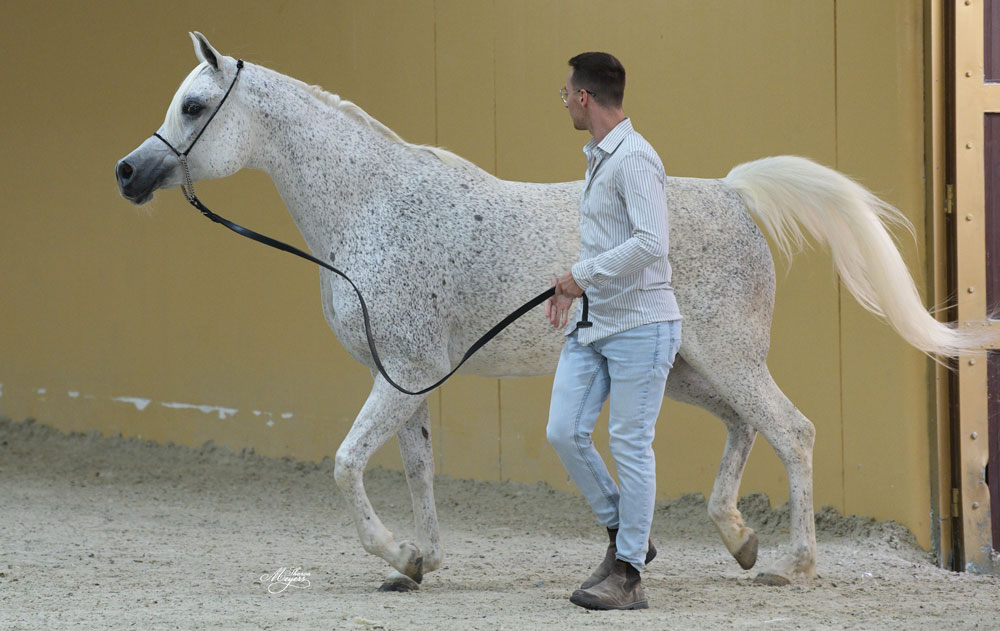
Dubai Arabian Horse Stud’s influential mare D Afaf (Frasera Mashar x ESA Arieanna Express).
DELEGATE REPORTS
It’s impossible to cover all 56 Delegate reports in this article. Hence, the below information is just a sample from around the world.
It’s heartwarming to learn from our Delegate reports that Arabian horses are being used globally for an extraordinary variety of equestrian pursuits including: leisure riding, cattle ranching, equestrian tourism, harness, cross-country, tent pegging, dressage, eventing, show jumping, endurance riding, racing, ridden showing, halter/in-hand showing, western riding, cattle sports like cutting/reining and campdrafting, barrel racing, polo, polocrosse, riding for the disabled, competing with children in interschool competitions, liberty work, archery on horseback, taking part in public parades and festivals and most importantly Arabians are highly regarded as treasured companions. Delegates also stated that the awarding of the WAHO Trophy had a significant impact on their countries.
Although not all country registration information had been received for 2024, the following is of interest. Countries that registered an increased number of foals for 2024 compared to 2023: Algeria, Azerbaijan, Belgium, Bolivia, Chile, China, Croatia, Hungary, Italy, Lithuania, Oman, Pakistan, Qatar, Romania, Saudi Arabia, South Africa, the UAE, Ukraine, Uruguay, and Zimbabwe. Countries with over 500 registered foals so far for 2024: Saudi Arabia 5793, Egypt > 2000, USA 1965, Türkiye 1733, France 1535, UAE 1512, Qatar 936, Italy 835, Iran 820, Morocco 734, Poland 643, and South Africa 597.
PROMOTING ARABIANS
South Africa actively promotes the Arabian breed through various channels, including newsletters, social media, and website publications. They conduct educational seminars and training courses that cover breed history, care, welfare, and usage, and collaborate with magazines and equestrian organizations. Qatar invests in education, training, and building global partnerships. Bolivia promotes Arabians through national events and public and private exhibitions. In Austria, the breed is showcased and promoted at general stallion shows, All-Breed Performance Shows, Horse Trade Fairs, and Agricultural Trade Fairs. Annual special courses for stallion owners are held, as well as an educational full-day workshop for breeders. The USA supports the Al-Marah Arabian Horse Galleries in the International Museum of the Horse in Kentucky. Azerbaijan is planning seminars for coaches and riders in endurance competitions, believing this will significantly increase interest in Arabian horse breeding and ownership. Their country has a long tradition of horsemanship; in fact, their national animal is the Karabakh horse. Promotion of Arabian horses in China and the development of events includes horse shows, international collaboration, horse auctions, training sessions covering WAHO rule interpretation, horse breeding, horse health and social media promotion. Switzerland organizes various activities, such as exclusive training with Fredy Knie Junior at their National Circus Knie, where the Arabian horse has been an essential part of the shows for decades. They host a ‘Day of the Arabian Horse’ at the Swiss National Stud, showcasing the breed’s versatility. The Arabian Horse Association of Ukraine and the Veteran and Adaptive Equestrian Federation organize para-endurance competitions and the project ‘Riding into the Future’ for combat veterans and their families. Naturally, Arabian horses are used for these significant activities. Poland is also promoting the Arabian horse through art. Poles have a long tradition and history with horses and a deep love for horse artwork. And artists love to depict the Arabian.
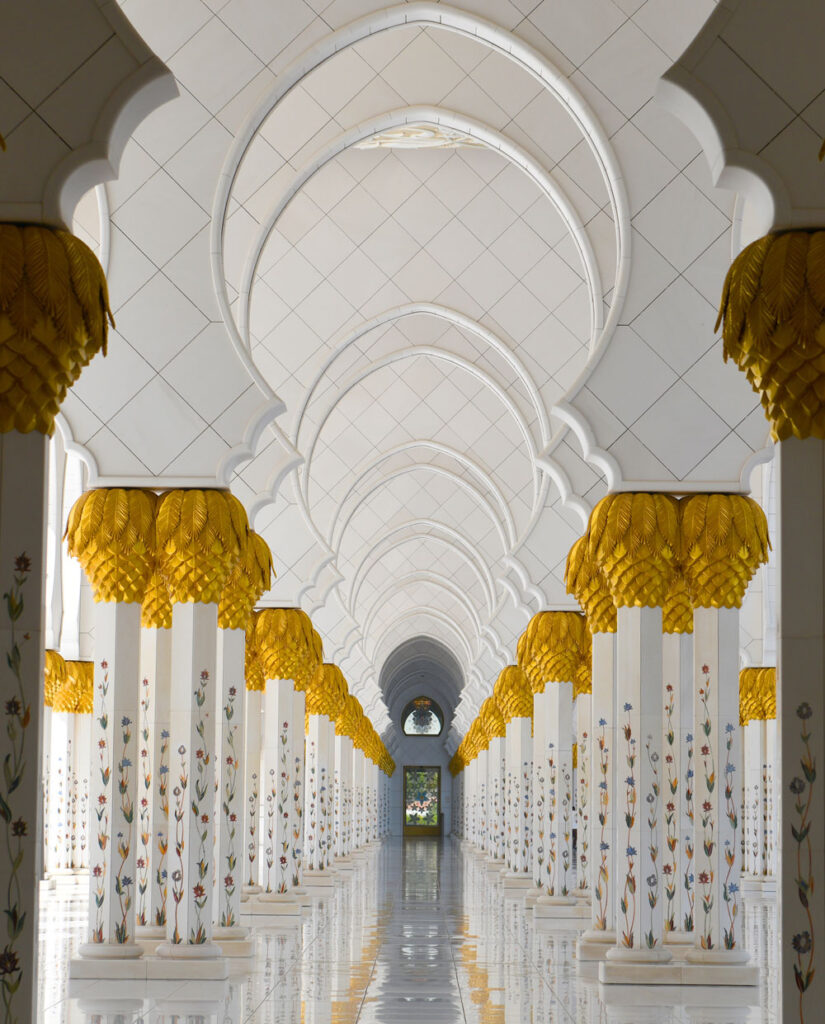
Sheikh Zayed’s Grand Mosque.
FOOD FOR THOUGHT
Brazil’s Delegate report concluded with: “…we would like to share a concern, which is the preservation of the true purpose of the Arabian horse. We observe that many breeders are striving for the highest level of refinement possible, which is indeed very desirable and aesthetically pleasing. However, the result we have seen is that we are producing horses with poor conformation, weak legs, and limited functionality. We worry that we are dividing the breed into horses for sport, many of which are without type, and those that are only for beauty. We know that the Arabian horse must have both.”
So please, we cannot forget that the Arabian horse was made - and I would say also nowadays - to be ridden. I repeat, the Arabian horse was made to be ridden.
- BRAZIL’S DELEGATE REPORT
GUEST SPEAKERS
Monika Savier has a Master of Arts in social and educational sciences, has bred Arabian horses since 1989, and is a renowned international equestrian journalist, photographer, and author. Monika’s talk, ‘Female Choice and the Impact of Assisted Reproduction Technology on the Lives of Stallions and Mares,’ was both challenging and inspiring. At the start of her talk, Monika reminded us, “We should not carelessly and out of commercial interest turn natural reproduction into a case for veterinary medicine. Of course, reproduction technology can be a great help in special cases, but as an industry it has greatly increased the costs of breeding and in some contexts it is counterproductive. And my point is that, somewhere along the line, the mental and physical welfare of the horses themselves has been almost totally forgotten. No more ‘horses of the century’ have been born in recent years, despite science and modern technologies for improving breeding. Instead, our breed’s gene pool has narrowed considerably. What also falls by the wayside is the natural contact between stallions and mares, their communication, and their libido. And that has its side effects.”
The second Guest Speaker, Emma Maxwell, has an incredible lifetime of experience with Arabian horses, including roles as a breeder, trainer, judge, writer, lecturer, and photographer. Her presentation was titled ‘Changes – Insights into How Arabian Breeding Has Changed’ and was cleverly backed up by photos of horses from the era WAHO began (1970s), plus a video of US National Champions from 1958 to 2024, which gave a pictorial journey that revealed changes in the breed’s physical and photographic presentation. Emma spoke about the way breeding goals have changed and theories about selection pressures that may have been unintended consequences. It was emphasized that in the 1970s, an Arabian’s versatility was a prominent feature, requiring two things as a base standard: sanity and soundness. Photos were used to demonstrate that countries favoured different phenotypes throughout those years. Although there are still small groups of Crabbet, Polish, Russian, and Spanish Arabians Emma said, “The creation of the ‘Straight Egyptian brand’ never looked back, and is the only ‘straight’ bloodline definition to maintain its cachet in modern times, where most bloodlines are put into the blender and homogenized.”
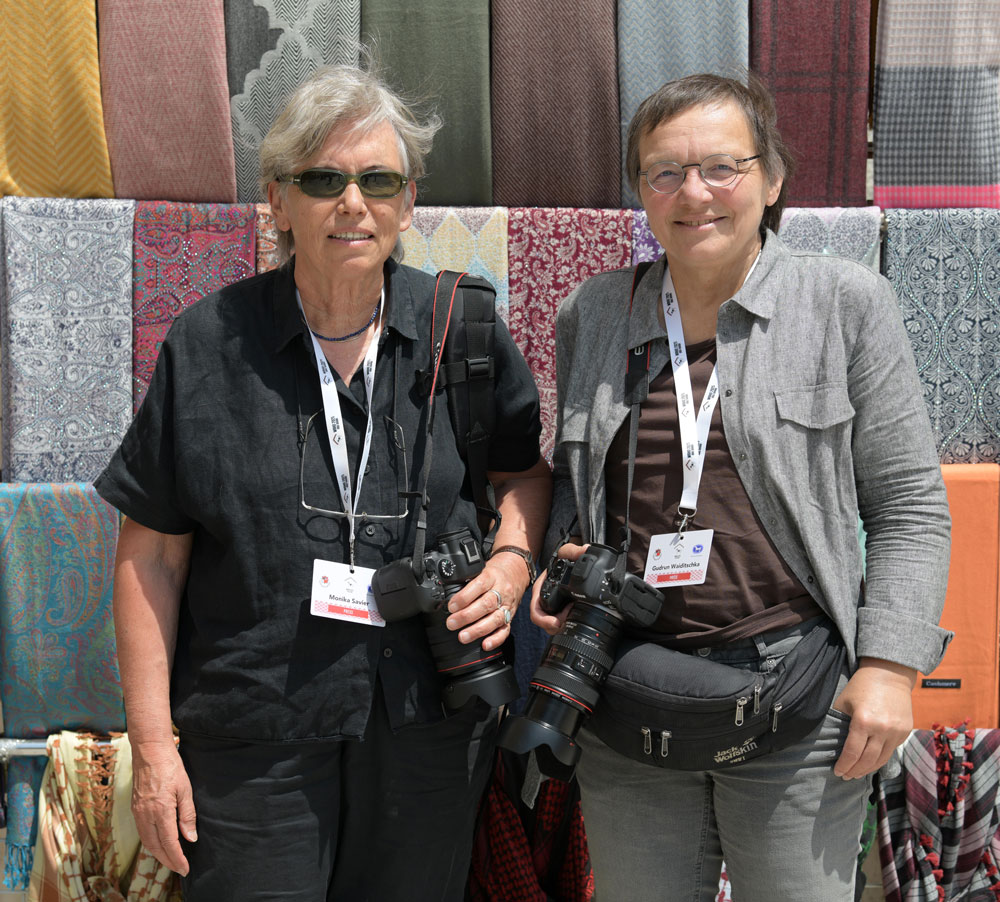
Guest Speaker Monika Savier (Left) with Gudrun Waiditschka.
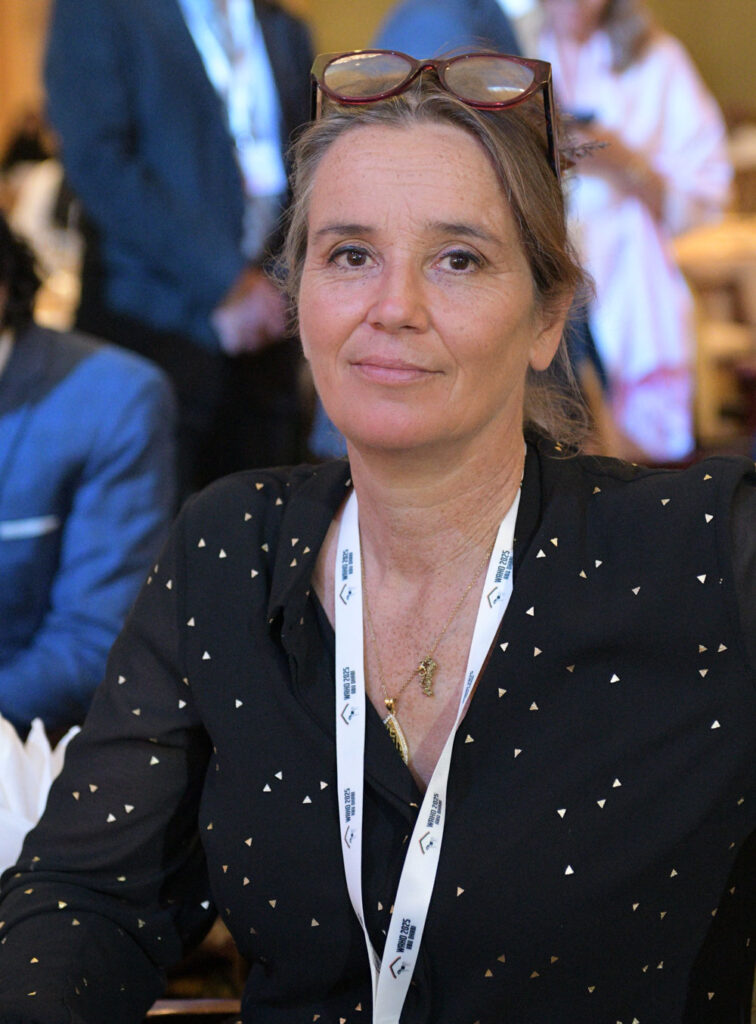
Guest Speaker Emma Maxwell.
FIRST ATTENDANCE
I would like to share the thoughts of Sunel van der Merwe from South Africa who attended the WAHO conference for the first time: ‘It was a once-in-a-lifetime experience filled with knowledge, culture, and connection. As the office manager and stud book keeper for the Arab Horse Society of South Africa, I don’t work directly as a breeder, but I do live and breathe Arabians every day. This conference truly brought the global Arabian community to life for me. The General Assembly was incredibly insightful. Hearing each country’s report reminded me how unique yet united we all are in our love for this noble breed. Monika Savier’s talk was both scientific and soulful, highlighting the need to preserve natural breeding behaviours. Emma Maxwell had us all reflecting on how far the Arabian has come and whether we’re always heading in the right direction. We also had some unforgettable outings, watching Arabian horses thunder down the track at Al Ain Racecourse, a rare sight for us South Africans, and going to Abu Dhabi Turf Club was a lovely bonus. Visiting the world-class Dubai Arabian Horse Stud, where every detail reflected true passion for the breed. And of course, finally putting faces to names I email almost daily was the cherry on top!
For further information about the World Arabian Horse Organization (WAHO) please visit www.waho.org.



